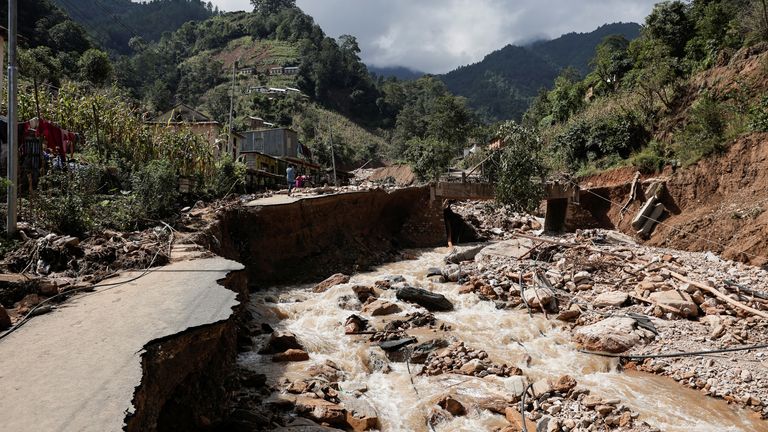Nepal is grappling with the aftermath of severe flash floods, which have caused widespread destruction across the nation. Heavy monsoon rains in September 2024 triggered some of the worst flooding in decades, affecting rural and urban areas alike. The disaster has resulted in the loss of over 226 lives, while thousands more have been displaced from their homes. Entire communities have been submerged, and critical infrastructure such as roads, bridges, and electricity supplies have been severely damaged, compounding the already challenging situation for the Nepali people.
The capital, Kathmandu, was hit particularly hard by the floods. The torrential rains led to landslides, trapping residents in their homes and cutting off key transportation routes. Rescue teams have been working around the clock to evacuate people from high-risk areas, but the scale of the disaster has overwhelmed local authorities.
Experts warn that the intensity of the flooding is a direct result of climate change. Nepal, being a mountainous region, is particularly vulnerable to extreme weather conditions. As global temperatures rise, monsoon patterns are becoming more unpredictable, leading to heavier rainfall in shorter periods. This has increased the frequency and severity of floods and landslides in the region, raising concerns about the country’s preparedness for future natural disasters.
While relief efforts are underway, many communities remain isolated, with aid struggling to reach them. The Nepali government has called for international assistance to deal with the immediate crisis and to build long-term resilience against future environmental challenges. Humanitarian organizations have also stepped in to provide food, clean water, and medical supplies to those affected, but the scale of the need is vast.
The devastation has also prompted discussions on the need for more robust disaster management strategies. Environmentalists are urging for better land-use planning, reforestation efforts, and investment in flood mitigation infrastructure to protect vulnerable populations. The international community is closely watching Nepal’s response to the crisis, as it serves as a stark reminder of the broader impacts of climate change on developing nations.
As Nepal continues to recover from this disaster, the focus remains on ensuring that such tragedies are minimized in the future, with greater emphasis on sustainability and climate resilience.





